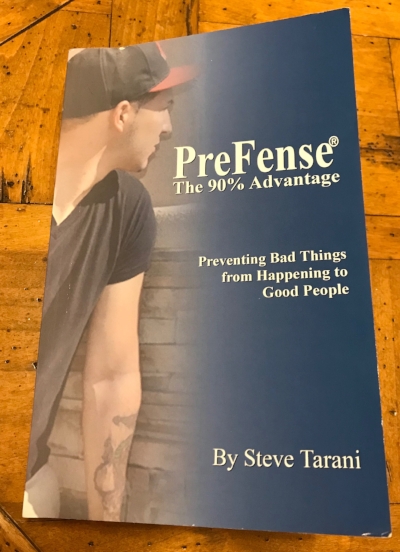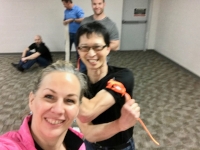While we can’t plan for everything or avoid all possibly hazardous situations, a good ‘Safety Barometer’ can keep you (and those in your charge) safe with a little practice and not too much work. Detailed below are the elements to developing your own self defense barometer and skill set.
First, be attentive to your surroundings. If something seems ‘off’, take a moment to identify what it is. Is it a person? Is something in the environment out of place? Is it something that is usually there, not? Is a door open that should be closed? Are all the lights working, etc? This process is called the OODA loop. The OODA loop has been used by civilians and military alike for decades to observe, evaluate and change a situation to effect the safest outcome in a potentially violent encounter. The acronym stands for Observe – Orient – Decide – Act. The moment you observe something wrong, orient on what it is, decide what to do and do it. The process is fluid and requires constant reassessment until you feel you are safe.
For example, while you are walking down the street, you observe that you have an uncomfortable sense that something is not right. You orient on your environment and the people within it. You see someone who makes you uncomfortable. You can’t see anything specifically identifying the person as a threat, but you orient on your discomfort. You decide to put more distance between you and the person and change directions. You have affected all 4 stages of the OODA loop. You are not done, however. As you change direction, you notice he has also changed direction and begins to follow you. You now check for all avenues of escape, choose the one moving you towards the most other people and move toward it. He turns and walks away. Whether you can articulate a reason or not, your discomfort indicates a need to evaluate and change your environment. The old adage “an ounce of prevention is better than a pound of cure” is dead on in the self defense realm. The best self defense skill you can develop is to not be in a situation that can turn to a violent encounter.
Violence prevention, for the most part, hinges on a few small things that are easy to do:
First, develop your awareness and OODA loop skills.
Second, learn and practice a ‘self defense’ mode and attitude. This mode should include: how you walk, how you use your awareness, voice and posture to convey that not only are you paying attention to everything in your environment, but that you will fight to defend yourself. It should not be one of bluster, bravado or aggression. A calm, determined attitude and athletic stance will convey your ‘power’ and determination.
Third, de-select yourself from a potential attackers ‘Victim Selection List’. This also is fairly easy to do unless you have a stalker or a personal connection with a violent person. If you are in this category, you need to address that problem IMMEDIATELY. Utilize the police, victim advocates, a shelter and all other appropriate professionals.
To be on a bad guy’s ‘Possible Victim’ list he/she first needs to notice you. To avoid being noticed, don't present the look of being a ‘profitable’ target. Easily removable belongings of value such as a purse should be held close to your body. Blending with your environment is always a good idea. A bikini at a black tie event, for example, will draw attention to you. If you also have on expensive jewelry with that bikini and appear intoxicated, you are putting forward the message, “Look at me, I have money and I can’t defend myself”… a siren song to a predator! An outrageous example, yes, but the idea behind it is clear.
If no one chooses you as a victim, you have accomplished your self defense goals in the easiest possible manner! To summarize, don’t get chosen, change your environment immediately upon sensing a threat and convey the impression that you are a ‘hard target’: you’ll be a lot of work for little to no gain. Awareness, avoidance, attitude and action are all essential elements to a functional ‘Safety Barometer’!
Have fun learning great skills that will keep you safe!
I wrote this article in 2010. In the interest of being current, I’ve added the following:
While you are developing your Safety Barometer, consider adding the following two areas of skill development: physical (sometimes referred to a “Hard Skills”) and medical or first aid skills.
Learning how to notice (and use) an AED Automated External Defibrillator and a tourniquet are the two easiest and most important medical or first aid skills to add. A basic ‘combat casualty care’ class will teach how to handle massive bleeding, airway and lung issues. Taught to military and law enforcement, there are classes available to civilians. Think of it as taking a First Aid class that is suited to todays climate that includes active shooters and terrorism. There are tons of great books to read on each of the areas detailed in this overview article. I've chosen two to feature: Steve Tarani's PreFense and Left of Bang by Patrick Van Horne and Jason Riley. Both are easy to read, simplify complex information well and go into fascinating detail on awareness and the elements that can keep you safe.
Self defense physical skills will be covered in the next article/post. From verbal de-escalation to firearms and everything in between, self defense skills are out there to learn! *








